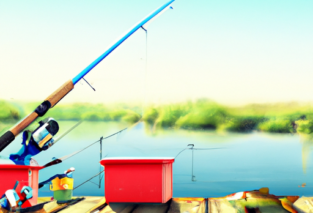Are you an avid angler looking to conquer the challenges of fishing in murky waters? Look no further than “Can You Go Fishing in Muddy Water: Tips and Techniques for Limited Visibility Fishing.” This comprehensive guide is packed with expert advice and innovative tips that will help you navigate through the challenges of fishing in limited visibility conditions. Whether you’re a beginner or an experienced angler, this product offers valuable insights and strategies to maximize your chances of success. Discover the secrets of catching fish when the water is murky, and enhance your fishing skills like never before.
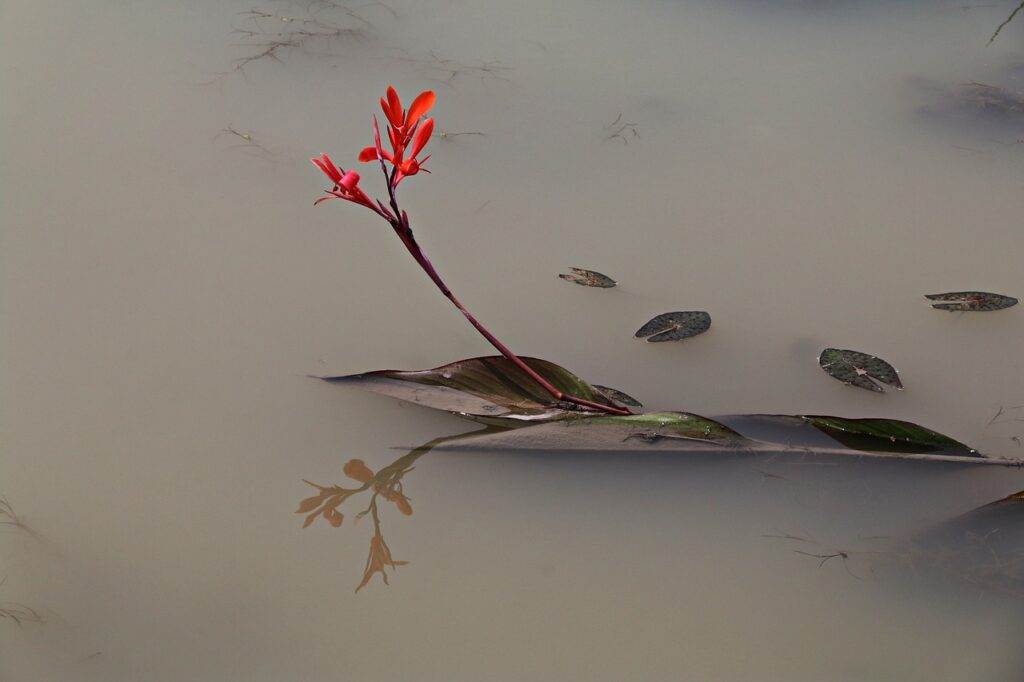
Gear and Equipment
Choosing the right fishing rod
When fishing in muddy water, it is important to choose a fishing rod that is appropriate for the conditions. A medium to heavy-action rod is recommended as it will provide the necessary strength and sensitivity to handle larger fish and detect subtle bites. Additionally, a longer rod can be beneficial as it allows for longer casts and greater control over the lure.
Selecting the appropriate fishing line
In muddy water, visibility is reduced, making it necessary to use a fishing line that stands out. Opt for a high-visibility fishing line in bright colors such as neon green or yellow. This will help you keep track of your line and detect even the slightest movement.
Opting for weighted lures
Using weighted lures can be highly effective in muddy water as they sink faster and can reach the fish that are closer to the bottom. Look for lures with added weight or ones that are specifically designed for fishing in murky conditions.
Using high-visibility fishing line
As mentioned before, using a high-visibility fishing line is crucial in muddy water. It allows you to easily see and track your line, enabling you to detect bites and make the necessary adjustments. This can greatly increase your chances of success when fishing in limited visibility conditions.
Considering a fish finder or sonar device
A fish finder or sonar device can be incredibly helpful when fishing in muddy water. These devices use sonar technology to locate fish and provide valuable information about their depth and location. They can save you time and effort by helping you target areas where fish are more likely to be present.
Techniques for Fishing in Muddy Water
Understanding the behavior of fish in muddy water
In muddy water, visibility is severely reduced, which means fish rely more on their other senses to locate prey. Understanding this behavior can help you adjust your fishing techniques accordingly. Fish will often seek out areas with cover and structure for protection, as well as areas where food sources are more concentrated.
Targeting areas with cover and structure
When fishing in muddy water, it is essential to target areas with cover and structure. These areas provide shelter for fish and attract smaller baitfish, which in turn attract larger predatory fish. Look for submerged logs, rock formations, and areas with aquatic vegetation. These spots are more likely to hold fish even in limited visibility conditions.
Utilizing scent attractants
In muddy water, fish rely heavily on their sense of smell to locate food. Utilizing scent attractants can be highly effective in enticing fish to bite. Apply a scent attractant to your lures or bait to create a trail of scent that fish can follow. This can increase your chances of success, especially when fishing in low visibility situations.
Slow down your retrieval
When fishing in muddy water, it is important to slow down your retrieval. Fish are less likely to chase after fast-moving lures in limited visibility conditions. By slowing down your retrieval, you give the fish more time to see, smell, and feel the presence of your lure. This can make your bait more enticing and increase your chances of getting a bite.
Fishing at different depths
Fish in muddy water can be found at various depths depending on the conditions and the species you are targeting. Experiment with different depths to see where the fish are most active. Start by fishing near the bottom and gradually work your way up if you are not getting any bites. By trying different depths, you can increase your chances of finding fish even in limited visibility situations.

Tips for Success
Pay attention to weather conditions
When fishing in muddy water, it is important to pay attention to the weather conditions. Heavy rain or runoff can make the water even murkier, which can affect fish behavior. Monitor weather forecasts and plan your fishing trip accordingly. Fishing before or after a rainstorm can sometimes yield better results as the fish may be more active during these times.
Keep your bait near the bottom
In muddy water, fish are more likely to be close to the bottom where they can take advantage of any cover or structure. Keep your bait near the bottom to increase your chances of getting a bite. This can be done by using weighted lures or adjusting your fishing technique to keep your bait closer to the bottom.
Use noisy baits to attract attention
In limited visibility conditions, noise can play a crucial role in attracting fish. Using lures that produce noise, such as rattling crankbaits or buzzbaits, can help grab the attention of fish and entice them to strike. The noise created by these baits can cut through the murky water and make your offering stand out.
Try using larger bait
In muddy water, using larger bait can be more effective as it provides a bigger target for fish to see. Upsizing your bait can increase your chances of catching larger fish, especially in conditions where visibility is limited. Experiment with different sizes to see what the fish are most responsive to.
Experiment with different colors
When fishing in muddy water, it can be beneficial to experiment with different lure colors. Bright, bold colors such as chartreuse, orange, or pink can stand out more in the murky water and attract fish. However, it is worth noting that fish may also respond differently to specific colors depending on their preferences and the conditions. Don’t be afraid to switch up your lure colors to see what works best.
Safety Tips
Wear a life jacket
Safety should always be a top priority when fishing, especially in muddy water where visibility is limited. It is essential to wear a life jacket to ensure your safety in case of any accidents or unexpected situations. A life jacket can provide buoyancy and help you stay afloat until help arrives.
Use caution when wading in muddy water
If you choose to wade in muddy water, it is important to exercise caution. The reduced visibility can make it difficult to identify potential hazards or changes in the terrain. Take slow and deliberate steps to avoid slipping or tripping on uneven surfaces. Use a wading staff for added stability and always be aware of your surroundings.
Stay alert to your surroundings
In limited visibility conditions, it is crucial to stay alert to your surroundings. Keep an eye out for any potential hazards and be mindful of other anglers or boaters in the area. By staying alert, you can prevent accidents and ensure a safe and enjoyable fishing experience.
Bring a fishing buddy
Fishing with a buddy is not only more fun but also adds an extra layer of safety. Having a fishing buddy means you can watch out for each other and help in case of emergencies. Additionally, another person can provide assistance in case you need help navigating through the muddy water or untangling lines.
Be mindful of hooks and sharp objects
When fishing in any conditions, it is important to be mindful of hooks and other sharp objects. In muddy water where visibility is reduced, it can be easy to accidentally hook yourself or others. Take care when handling hooks and always make sure to properly dispose of any sharp objects to prevent accidents.
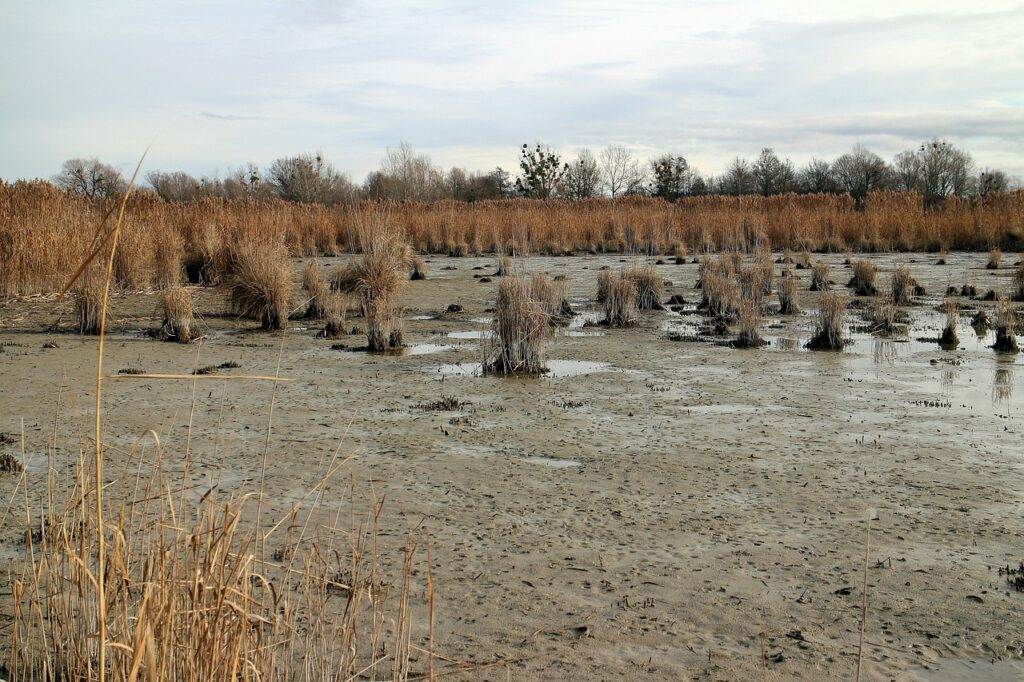
Fishing Techniques for Different Species
Bass fishing in muddy water
When bass fishing in muddy water, focus on areas with cover and structure such as fallen trees, docks, or vegetation. Use loud and brightly colored lures to attract their attention and fish at different depths to increase your chances of success. Slow down your retrieval and experiment with different techniques to find what works best for the bass in your specific fishing spot.
Catfish fishing in muddy water
Catfish are known to thrive in muddy water, making them an excellent target species for limited visibility fishing. Look for areas with underwater structures like rocks or submerged trees, as catfish often hide in these spots. Use strong and durable fishing gear, along with smelly bait such as chicken liver or stink bait, to attract catfish.
Crappie fishing in muddy water
Crappie can be more challenging to catch in muddy water, but with the right techniques, it is still possible. Target areas with structure and cover, such as brush piles or submerged vegetation. Slowly jig your bait up and down to entice crappie to bite. It may take some patience and persistence, but once you locate a school of crappie, the action can be fast and exciting.
Trout fishing in muddy water
Trout are known for their preference for clear water, but they can still be caught in muddy conditions. Look for areas where freshwater streams or tributaries meet the muddy water, as trout may be more active in these transitional zones. Use brightly colored lures or bait that produces scent to increase your chances of attracting them.
Walleye fishing in muddy water
Walleye are known for their excellent low-light vision, which can work to your advantage when fishing in muddy water. Focus on areas with drop-offs, rocky structures, or submerged islands where walleye may be seeking shelter. Use lures that mimic their natural prey and experiment with different retrieval speeds to find what triggers their bite.
Preparing for Muddy Water Fishing
Researching the fishing spot
Before heading out to fish in muddy water, it is important to research the fishing spot. Look for information on water conditions, available fish species, and any recent reports or tips from other anglers. This can help you gain valuable insights and plan your fishing trip accordingly.
Checking water clarity and conditions
Monitor the water clarity and conditions before and during your fishing trip. Muddy water can change rapidly due to weather or other factors, so staying up to date on the current conditions is essential. Consider using a water clarity gauge or testing kit to determine the visibility and adjust your fishing tactics accordingly.
Adjusting your fishing tactics
Fishing in muddy water requires some adjustments to your usual techniques. Be prepared to slow down your retrieval, use high-visibility lines and brightly colored lures, and target areas with cover and structure. By adapting your tactics, you can increase your chances of success in limited visibility conditions.
Bringing the right gear and equipment
When fishing in muddy water, it is important to have the right gear and equipment. Pack your fishing rod and reel with high-visibility fishing line, along with a selection of weighted lures and brightly colored baits. Don’t forget to bring extra hooks, sinkers, and other tackle essentials. Being well-prepared will save you time and frustration on the water.
Having contingency plans
Fishing in muddy water can be unpredictable, so it is always good to have contingency plans. If the conditions are not conducive to fishing or if you’re not finding any success, be prepared to switch locations or try different techniques. Flexibility and adaptability are key to making the most of your fishing trip.
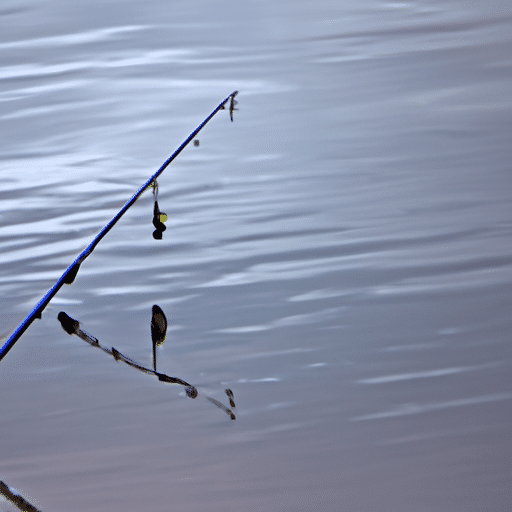
Finding Fish in Muddy Water
Using underwater cameras or drones
Underwater cameras or drones can be incredibly helpful in locating fish in muddy water. These devices allow you to see beneath the surface and scout for fish activity. Look for fish holding near structures or areas with concentrated baitfish. This visual feedback can greatly increase your chances of finding fish and targeting them effectively.
Paying attention to bird activity
Birds, such as seagulls or diving birds, can indicate the presence of baitfish and, in turn, larger predatory fish. Pay attention to bird activity, such as birds diving or feeding on the water’s surface. This can be a good sign that there are fish below, even if you can’t see them due to limited visibility.
Looking for signs of baitfish
In muddy water, baitfish can be an excellent indicator of where larger fish may be. Look for signs of baitfish such as jumping or splashing on the water surface. This can signify an active feeding area, and larger fish are likely nearby. Casting your lure or bait in these areas can increase your chances of attracting a bite.
Observing water surface disturbances
Another sign of fish activity in muddy water is the presence of water surface disturbances. Look for ripples, swirls, or waves that are not caused by wind or natural currents. These disturbances can indicate fish feeding or moving through the water. Focus your fishing efforts in these areas to maximize your chances of success.
Using fish attractants or chumming
Using fish attractants or chumming can be effective in attracting fish to your location in muddy water. Fish attractants are scented substances that can be applied to your lures or bait to create a trail of scent that fish can follow. Chumming involves dispersing small pieces of bait or fish food in the water to attract fish. Both methods can help in drawing fish closer to your fishing spot.
The Role of Patience and Persistence
Understanding the challenge of limited visibility fishing
Fishing in muddy water presents unique challenges due to limited visibility. It requires patience and persistence as fish may be less active and harder to locate. Understanding and accepting this challenge is the key to staying motivated and focused on the task at hand.
Being patient and persistent in your efforts
In muddy water, it may take longer to find fish and get bites compared to clear conditions. Be patient and persistent in your fishing efforts. Keep trying different techniques, adjusting your tactics, and targeting different areas until you find success. Remember, fishing is a game of perseverance, and the reward is all the more satisfying when it finally comes.
Adapting your techniques based on feedback
Throughout your fishing trip, pay attention to the feedback you receive from the fish. If a certain technique or bait is not working, be open to adapting and trying something different. Pay attention to subtle changes in fish behavior, bites, or the lack thereof. This feedback can guide you in making the necessary adjustments to increase your chances of success.
Maintaining a positive mindset
When faced with challenges such as fishing in limited visibility conditions, it is important to maintain a positive mindset. Stay focused, enjoy the process, and embrace the adventure. Fishing is not just about catching fish, but also about being present in nature and appreciating the time spent by the water.
Enjoying the process of discovery
Fishing in muddy water can provide a unique opportunity for discovery and learning. Use the experience as a chance to explore new techniques, try different lures, and observe fish behavior in limited visibility conditions. Embrace the sense of curiosity and enjoy the process of discovering what works best in muddy waters.
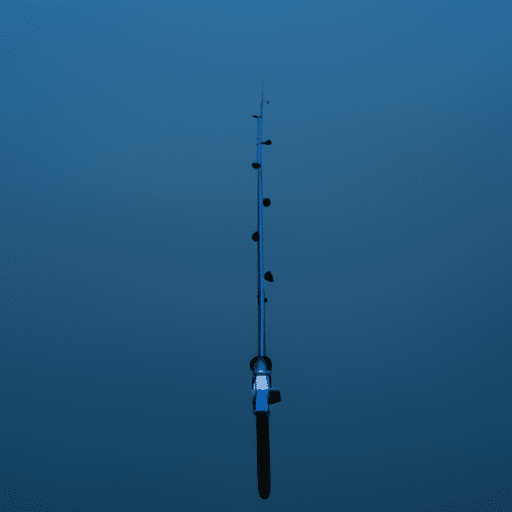
Adapting to Changing Conditions
Monitoring water clarity throughout your fishing trip
Water clarity can change throughout your fishing trip, especially in muddy water. Keep an eye on the water clarity and adjust your fishing techniques accordingly. If the water becomes even muddier, consider switching to brighter lures or using scent attractants to increase your chances of attracting fish.
Adjusting your bait and lure selection as needed
Changing conditions may require adjustments to your bait and lure selection. If the water becomes even murkier, consider using lures with larger profiles or brighter colors to stand out. The key is to make your offering as visible as possible in limited visibility conditions.
Switching fishing spots if necessary
If you’re not finding success in a particular fishing spot, don’t be afraid to switch things up and try a different location. Look for areas with a slightly clearer water or areas with more cover and structure. Moving around and exploring different spots can increase your chances of finding active fish.
Using different fishing techniques as conditions change
As conditions change, it may be necessary to switch up your fishing techniques. If your usual technique is not yielding results, try different retrieval speeds, depths, or presentations. Adapting your techniques to the changing conditions can be the key to enticing fish to bite.
Being flexible and adaptable
The ability to be flexible and adaptable is crucial when fishing in changing conditions. The weather, water clarity, and fish behavior can all vary throughout your fishing trip. Stay open to making adjustments, trying different approaches, or even changing your fishing plan altogether. Being flexible allows you to make the most of your time on the water and increases your chances of success.
Conclusion
Fishing in muddy water can be a challenging yet rewarding experience. By understanding the behavior of fish in limited visibility conditions and employing the right techniques, gear, and safety precautions, you can increase your chances of success. Remember to be patient and persistent, adapting your tactics as needed. With the right mindset and preparation, fishing in muddy water can lead to exciting catches and memorable fishing adventures.



